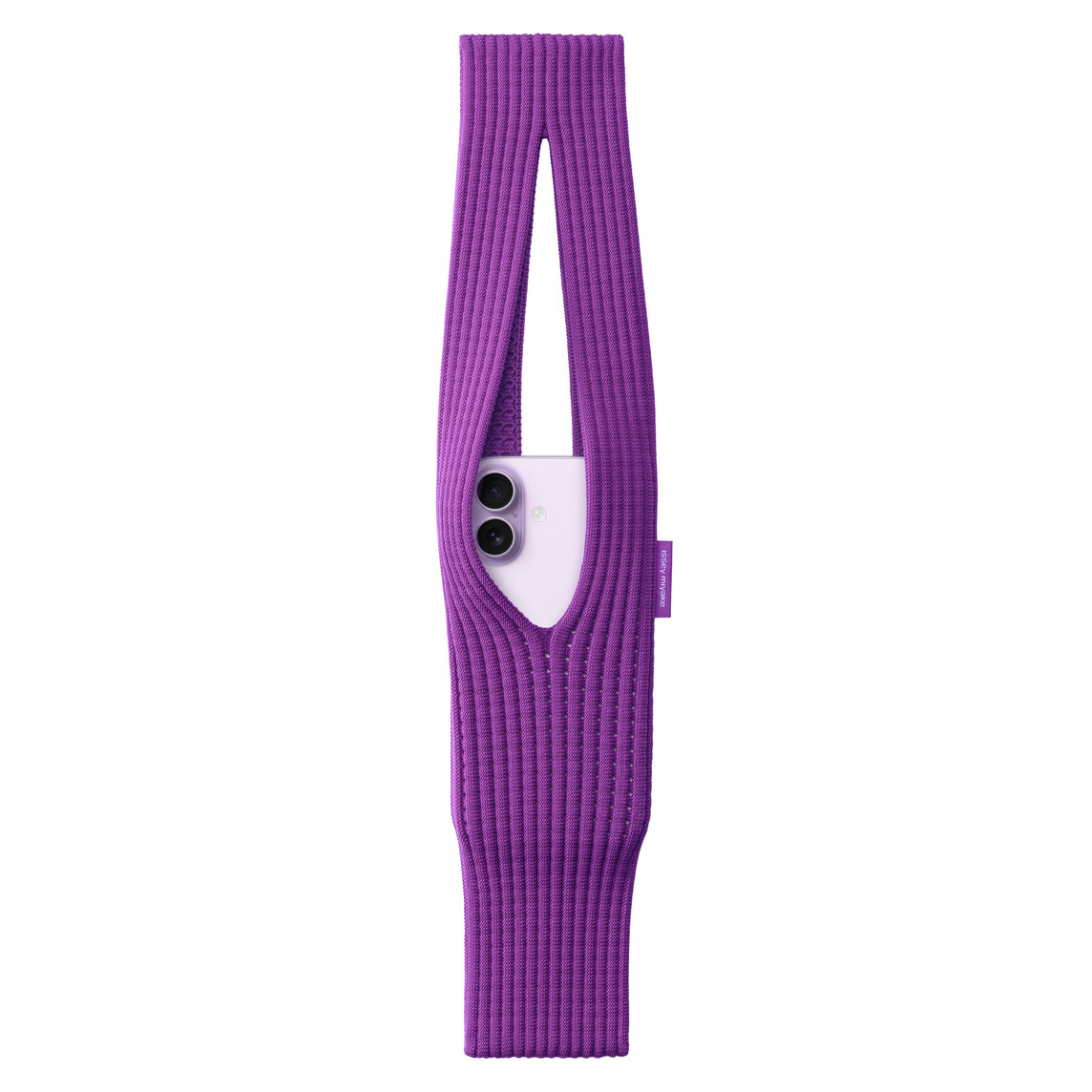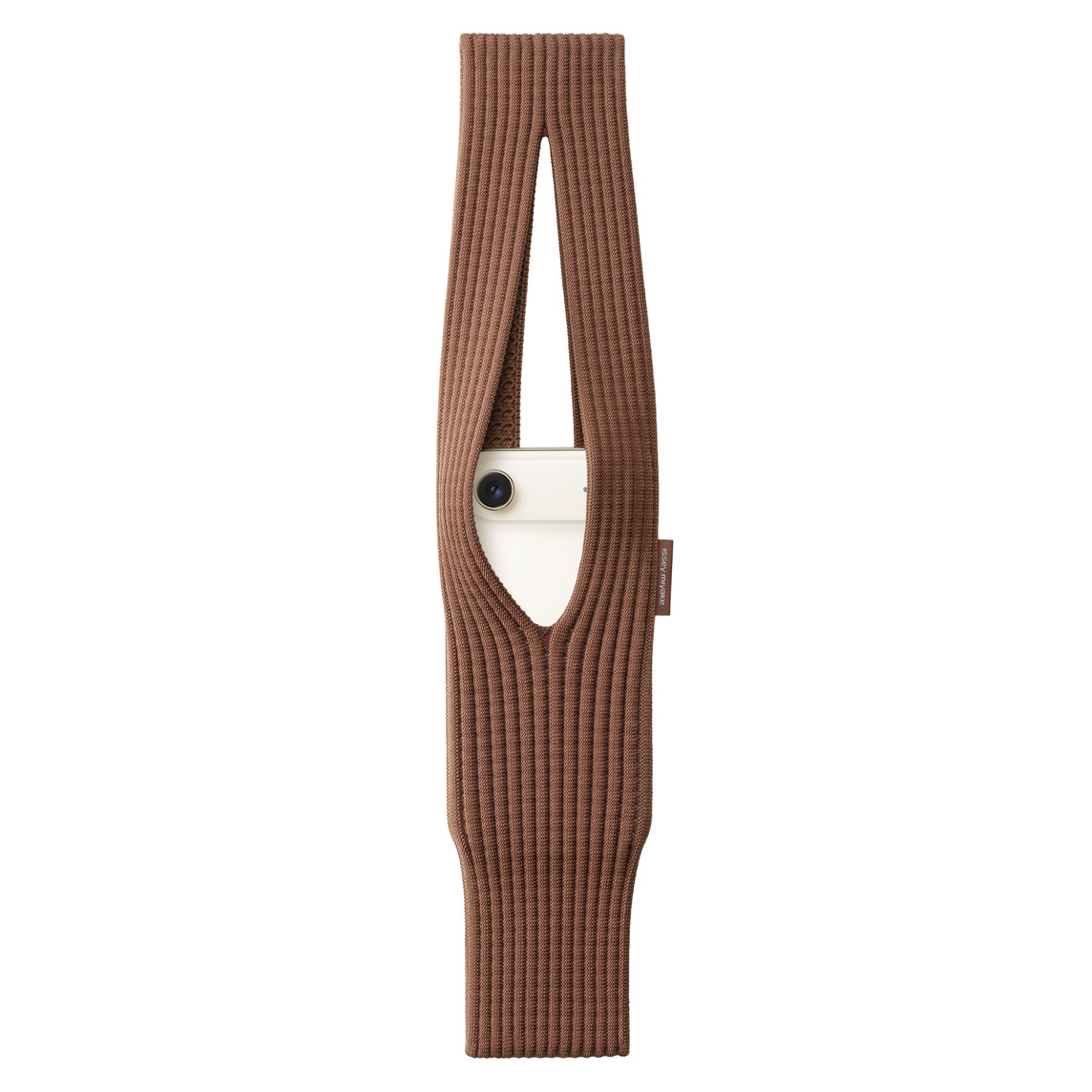Japanese Craftsmanship
Explore the japanese craftsmanship behind iPhone Pocket.

What You'll Learn
- Embodies the philosophy of monozukuri (the art of making things)
- ISSEY MIYAKE's 50+ years of textile innovation
- Human expertise combined with advanced technology
- Meticulous attention to every detail
- Wabi-sabi aesthetics celebrating character and use
- Sustainable practices rooted in traditional values
- Collaboration between Japanese and American design excellence
The iPhone Pocket embodies centuries of Japanese craftsmanship tradition, filtered through a modern lens of innovation and precision. Made in Japan, this accessory represents the culmination of a cultural philosophy that values perfection in every detail, patience in the creative process, and respect for materials and techniques. Japanese craftsmanship, or 'takumi,' goes beyond mere manufacturing—it's a holistic approach that considers the relationship between maker, material, and user. In the iPhone Pocket, you can see this philosophy expressed through meticulous attention to detail, innovative problem-solving, and an unwavering commitment to quality.
The Philosophy of Monozukuri
At the heart of Japanese manufacturing lies the concept of 'monozukuri'—literally 'the art of making things.' This philosophy encompasses not just the physical act of creation, but the spirit and mindset behind it. Monozukuri emphasizes continuous improvement (kaizen), respect for materials, and the pursuit of perfection. In the context of the iPhone Pocket, monozukuri manifests in the countless hours spent perfecting the 3D knitting process, the careful selection of materials, and the rigorous quality control that ensures every piece meets exacting standards. Japanese craftspeople don't view manufacturing as a purely mechanical process—they see it as an opportunity to create something that brings value and joy to the user's life.
ISSEY MIYAKE's Heritage
ISSEY MIYAKE has been at the forefront of Japanese fashion and design innovation since 1970. The brand's founder, Issey Miyake, pioneered the integration of traditional Japanese aesthetics with modern technology and materials. His philosophy of 'A Piece of Cloth' emphasized creating garments and accessories from single pieces of fabric, minimizing waste and celebrating the material's inherent properties. This approach directly influenced the iPhone Pocket's seamless 3D-knitted construction. ISSEY MIYAKE's research and development team, based in Tokyo, includes textile engineers, fashion designers, and technology specialists who work together to push the boundaries of what's possible with fabric. The iPhone Pocket represents decades of accumulated knowledge and expertise.
The Role of the Craftsperson

Design and craftsmanship: Japanese Craftsmanship
While the iPhone Pocket is manufactured using advanced computerized equipment, human expertise remains central to the process. Japanese craftspeople, many with decades of experience, program the knitting machines, monitor production, and perform quality inspections. These skilled workers understand not just how to operate the equipment, but why certain settings produce specific results. They can identify subtle variations in yarn quality, adjust machine parameters to compensate for environmental factors like humidity, and spot potential issues before they become problems. This combination of technological capability and human expertise is uniquely Japanese—the recognition that machines are tools that amplify human skill rather than replace it.
Attention to Detail
Japanese craftsmanship is legendary for its attention to detail, and the iPhone Pocket exemplifies this characteristic. Consider the strap attachment points: these aren't simply sewn on, but are integrated into the knitting process, creating a seamless transition that's both stronger and more elegant. The pleats are precisely spaced and sized to create the optimal balance between expandability and structure. Even the color dyeing process receives meticulous attention—each batch is carefully controlled to ensure color consistency across production runs. This level of detail extends to aspects users might never consciously notice, but which collectively create a product that feels special and well-made.
The Concept of Wabi-Sabi
Japanese aesthetics embrace the concept of wabi-sabi—finding beauty in imperfection and impermanence. While the iPhone Pocket is manufactured to exacting standards, its design acknowledges that it will be used, will develop character over time, and will show signs of its journey with its owner. The open textile structure means you can see through it when stretched, revealing the phone inside—a transparency that Western design might hide but Japanese aesthetics celebrate. The fabric's texture and the way it drapes are appreciated as part of the product's character. This philosophy encourages users to develop a relationship with their iPhone Pocket, seeing it not as a disposable accessory but as a companion that gains meaning through use.
Sustainable Practices
Japanese craftsmanship has always emphasized respect for materials and minimal waste—principles that align perfectly with modern sustainability concerns. The iPhone Pocket's 3D knitting process produces virtually no waste fabric, a stark contrast to traditional cut-and-sew manufacturing. The durability built into every iPhone Pocket reflects the Japanese principle of creating products that last, reducing the need for replacement. The choice of materials considers not just performance but also environmental impact. This isn't sustainability as an afterthought or marketing message—it's an integral part of the manufacturing philosophy, rooted in centuries of Japanese respect for resources and materials.
The Apple Collaboration
The collaboration between ISSEY MIYAKE and Apple represents a meeting of two companies that share a commitment to design excellence and innovation. Apple's design philosophy, influenced by Japanese minimalism, found a natural partner in ISSEY MIYAKE's approach to textile innovation. The development process involved teams from both companies working together to define requirements, test prototypes, and refine the design. Apple's expertise in user experience and product design combined with ISSEY MIYAKE's textile innovation to create something neither could have achieved alone. This collaboration demonstrates how Japanese craftsmanship can elevate technology products, adding warmth and humanity to digital devices.
Conclusion
The Japanese craftsmanship embodied in the iPhone Pocket represents more than manufacturing excellence—it's a philosophy of creation that values quality, sustainability, and the relationship between object and user. By choosing an iPhone Pocket, you're not just buying an accessory; you're participating in a tradition of craftsmanship that spans centuries while embracing the possibilities of modern technology. This fusion of old and new, tradition and innovation, is the essence of contemporary Japanese design.
Frequently Asked Questions
How does Japanese Craftsmanship work with iPhone Pocket?
The iPhone Pocket's 3D-knitted design makes it perfect for japanese craftsmanship. The expandable structure adapts to your needs while maintaining security and accessibility.
Which color is best for Japanese Craftsmanship?
Color choice depends on your personal style and use case. For japanese craftsmanship, consider both aesthetic preferences and practical factors like visibility and wear patterns.
Should I choose short or long strap for Japanese Craftsmanship?
Short straps ($149.95) offer compact portability, while long straps ($229.95) provide hands-free versatility. For japanese craftsmanship, consider how you typically carry your phone and what activities you'll be doing.
Related Articles
Ready to Shop?
Explore all 11 iPhone Pocket colors and find the perfect match for your needs.
View All Products